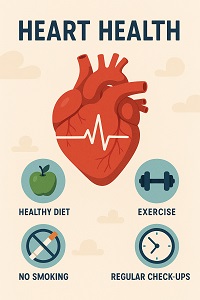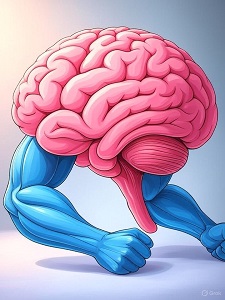
A Comprehensive Review of Barbara O’Neill’s Lecture on Heart HealthIntroductionIn her lecture on heart health, Barbara O’Neill, a health educator, draws from biblical references, personal anecdotes, and select scientific sources to advocate for natural approaches to maintaining cardiovascular health. Anchored in Proverbs 4:23, which advises to “keep the heart with all diligence, for out of it are the issues of life,” and Leviticus 17:11, which states “the life of the flesh is in the blood,” O’Neill emphasizes the interconnected roles of the heart, blood, and blood vessels. She challenges conventional medical perspectives on cholesterol, salt, and blood thinners, proposing lifestyle changes and natural remedies to prevent and reverse heart disease. This paper provides a detailed summary and analysis of her lecture, organized into key themes, with an accessible and structured presentation of her arguments.
1. The Heart, Blood, and Blood VesselsO’Neill begins by describing the heart as a muscle composed of cells that can be strengthened or weakened based on lifestyle choices. The heart pumps blood, and the quality of the blood—its viscosity and contents—along with the condition of the blood vessels, significantly impacts heart health. She introduces cholesterol as a central topic, given its widespread association with heart disease, and sets the stage for debunking common misconceptions.
2. Debunking the Cholesterol MythO’Neill challenges the mainstream narrative that cholesterol is the primary cause of heart disease, citing several books by health professionals, including:
3. Critique of Conventional Medical ApproachesO’Neill contrasts two approaches to healing: a faith-based, natural approach that works with the body’s innate ability to heal, and a fear-based medical approach that relies on drugs and assumes the body cannot heal itself. She cites statistics claiming medicine is the third leading cause of death globally, including from prescribed medications, and shares anecdotes of adverse drug reactions to highlight the risks of pharmaceutical interventions.Cholesterol-Lowering Medications (Statins): O’Neill criticizes statins like Lipitor and Crestor, which block the liver’s pathway for producing cholesterol and coenzyme Q10, a heart-protective enzyme. She recounts a story of a doctor and astronaut who experienced severe memory loss after taking Lipitor, with similar reports from others online. Side effects of statins, she claims, include dementia, Alzheimer’s, muscle wasting, and increased breast cancer risk due to their impact on sex hormone production. O’Neill asserts that stopping statins can restore memory without significant withdrawal risks, unlike drugs like cortisone.Bypass Surgery: She describes coronary bypass surgery as invasive and temporary, as the grafted arteries are less durable than native ones. She shares a story of a man named Jim who opted for a bypass instead of adopting lifestyle changes, resulting in diminished quality of life and premature death.Low-Fat Diets: O’Neill notes that the push for low-fat diets since the 1970s and 1980s, promoting margarine over butter, has not reduced heart disease rates. Instead, she argues, it has contributed to increased dementia and Alzheimer’s, with 1,700 new Alzheimer’s cases diagnosed weekly in Australia.
4. The Role of SaltO’Neill challenges the vilification of salt, particularly table salt (sodium chloride), which she describes as a processed product containing only two minerals. She contrasts this with Celtic and Himalayan salts, which retain 82 and 75 minerals, respectively, closely mimicking the mineral balance of seawater and human blood. She references The Calcium Lie by Dr. Robert Thompson, which highlights seawater’s mineral composition as evidence of a purposeful design.Table salt, O’Neill argues, disrupts the sodium-potassium balance in cells due to its lack of buffering minerals, leading to high sodium levels, cell swelling, and high blood pressure. Celtic or Himalayan salt, however, supports cellular hydration and balance, as their magnesium content draws water into cells. She recommends placing a small crystal of Celtic salt in the mouth before drinking water to enhance hydration and energy production via sodium-potassium pumps in cell membranes. O’Neill cites Matthew 5:13, interpreting “salt that has lost its savor” as processed table salt lacking essential minerals.
5. Natural Blood ThinnersO’Neill warns against aspirin as a blood thinner, citing risks of brain, eye, and stomach bleeds, which contribute to dementia, vision deterioration, and ulcers. She advocates for natural alternatives:
6. Lifestyle Interventions for Heart HealthO’Neill proposes a holistic approach to heart health, encapsulated in her “SUSTAIN ME” principles (an acronym not fully detailed in the lecture but implied to include nutrition, exercise, and stress management). Key recommendations include:
7. Case Studies and AnecdotesO’Neill shares several stories to illustrate her points:
8. Conclusion and Call to ActionO’Neill concludes by reiterating Proverbs 4:23, urging diligence in heart care to enjoy a healthy, active life, particularly for engaging with grandchildren. She emphasizes the simplicity and accessibility of her recommendations—hydration, natural salts, herbs, exercise, and stress management—and encourages listeners to take responsibility for their health. The lecture ends with a prayer thanking God for the body’s design and the simplicity of these principles.
Analysis and ReflectionO’Neill’s lecture is engaging and accessible, using relatable anecdotes and biblical references to connect with her audience. Her emphasis on natural remedies and lifestyle changes aligns with holistic health philosophies, appealing to those skeptical of conventional medicine. However, her claims, particularly about cholesterol and statins, rely heavily on select sources that challenge mainstream medical consensus, which may require further scrutiny. For instance, while she cites adverse effects of statins, she does not acknowledge their documented benefits in certain populations. Similarly, her dismissal of cholesterol’s role in heart disease oversimplifies a complex issue, as evidence supports a link between high LDL levels and cardiovascular risk in specific contexts.Her advocacy for Celtic salt, cayenne pepper, and hydration is grounded in practical advice, though the scientific basis for some claims (e.g., Celtic salt’s superiority) is less robust. The emphasis on HIIT and nasal breathing is supported by emerging research, making these recommendations more evidence-based. Overall, O’Neill’s lecture empowers individuals to take control of their health but should be approached with critical evaluation, especially regarding medical interventions.
Recommended Resources (as cited by O’Neill)
1. The Heart, Blood, and Blood VesselsO’Neill begins by describing the heart as a muscle composed of cells that can be strengthened or weakened based on lifestyle choices. The heart pumps blood, and the quality of the blood—its viscosity and contents—along with the condition of the blood vessels, significantly impacts heart health. She introduces cholesterol as a central topic, given its widespread association with heart disease, and sets the stage for debunking common misconceptions.
2. Debunking the Cholesterol MythO’Neill challenges the mainstream narrative that cholesterol is the primary cause of heart disease, citing several books by health professionals, including:
- The Great Cholesterol Con by Dr. Malcolm Kendrick
- The Great Cholesterol Deception by Dr. Peter Dingle
- The Great Cholesterol Lie by Dr. Dwight Lundell
- The Great Cholesterol Myth by Johnny Bowden
- The Great Cholesterol Hoax (author not specified)
- Put Your Heart in Your Mouth by Dr. Natasha Campbell-McBride
- High-Density Lipoprotein (HDL): Known as “good cholesterol,” HDL transports excess cholesterol back to the liver.
- Low-Density Lipoprotein (LDL): Labeled as “bad cholesterol,” LDL serves as a repairer and rebuilder, delivering cholesterol to the brain and repairing damaged arterial walls. O’Neill argues that LDL’s presence at sites of arterial damage is a response to injury, not the cause, likening it to blaming fire trucks for causing fires.
3. Critique of Conventional Medical ApproachesO’Neill contrasts two approaches to healing: a faith-based, natural approach that works with the body’s innate ability to heal, and a fear-based medical approach that relies on drugs and assumes the body cannot heal itself. She cites statistics claiming medicine is the third leading cause of death globally, including from prescribed medications, and shares anecdotes of adverse drug reactions to highlight the risks of pharmaceutical interventions.Cholesterol-Lowering Medications (Statins): O’Neill criticizes statins like Lipitor and Crestor, which block the liver’s pathway for producing cholesterol and coenzyme Q10, a heart-protective enzyme. She recounts a story of a doctor and astronaut who experienced severe memory loss after taking Lipitor, with similar reports from others online. Side effects of statins, she claims, include dementia, Alzheimer’s, muscle wasting, and increased breast cancer risk due to their impact on sex hormone production. O’Neill asserts that stopping statins can restore memory without significant withdrawal risks, unlike drugs like cortisone.Bypass Surgery: She describes coronary bypass surgery as invasive and temporary, as the grafted arteries are less durable than native ones. She shares a story of a man named Jim who opted for a bypass instead of adopting lifestyle changes, resulting in diminished quality of life and premature death.Low-Fat Diets: O’Neill notes that the push for low-fat diets since the 1970s and 1980s, promoting margarine over butter, has not reduced heart disease rates. Instead, she argues, it has contributed to increased dementia and Alzheimer’s, with 1,700 new Alzheimer’s cases diagnosed weekly in Australia.
4. The Role of SaltO’Neill challenges the vilification of salt, particularly table salt (sodium chloride), which she describes as a processed product containing only two minerals. She contrasts this with Celtic and Himalayan salts, which retain 82 and 75 minerals, respectively, closely mimicking the mineral balance of seawater and human blood. She references The Calcium Lie by Dr. Robert Thompson, which highlights seawater’s mineral composition as evidence of a purposeful design.Table salt, O’Neill argues, disrupts the sodium-potassium balance in cells due to its lack of buffering minerals, leading to high sodium levels, cell swelling, and high blood pressure. Celtic or Himalayan salt, however, supports cellular hydration and balance, as their magnesium content draws water into cells. She recommends placing a small crystal of Celtic salt in the mouth before drinking water to enhance hydration and energy production via sodium-potassium pumps in cell membranes. O’Neill cites Matthew 5:13, interpreting “salt that has lost its savor” as processed table salt lacking essential minerals.
5. Natural Blood ThinnersO’Neill warns against aspirin as a blood thinner, citing risks of brain, eye, and stomach bleeds, which contribute to dementia, vision deterioration, and ulcers. She advocates for natural alternatives:
- Water: O’Neill emphasizes hydration, recommending 8 glasses of water daily, consumed in small amounts (e.g., half a glass) to avoid overwhelming the body. She shares her experience with live blood analysis, where dehydrated blood appeared clumped, but hydration restored its flow.
- Cayenne Pepper: Described as a blood thinner, vasodilator, and arterial wall strengthener, cayenne pepper is praised in Back to Eden by Jethro Kloss. O’Neill suggests two capsules three times daily for those with arterial buildup, noting its safety and inability to cause harm, even in large doses.
- Garlic and Ginger: Both are blood thinners and vasodilators. Garlic, high in sulfur, can be added to hot soup to reduce its intensity, while ginger can be consumed as tea or in juices. O’Neill advocates for food as medicine, per Hippocrates’ philosophy.
6. Lifestyle Interventions for Heart HealthO’Neill proposes a holistic approach to heart health, encapsulated in her “SUSTAIN ME” principles (an acronym not fully detailed in the lecture but implied to include nutrition, exercise, and stress management). Key recommendations include:
- Reducing Chemical Exposure: Eliminating household and personal care products with synthetic chemicals to prevent arterial damage. She suggests using sodium bicarbonate and white vinegar for cleaning, with essential oils for scent.
- Nutrition: A plant-based diet with high fiber, moderate proteins, and natural fats (e.g., olive oil, coconut oil) is recommended. O’Neill cites historical examples, like Pacific Islanders eating coconut-based diets and the Maasai consuming blood, milk, and meat, both with low heart disease rates, to argue against saturated fat as a cause of heart disease.
- Exercise: The heart, as a muscle, requires exercise to strengthen. O’Neill advocates for high-intensity interval training (HIIT), as described in Body by Science by Dr. Doug McGuff, involving 30 seconds of intense effort followed by 90 seconds of recovery, repeated for 6 cycles (15 minutes total). She also references PACE by Dr. Al Sears, which emphasizes progressive exertion tailored to individual fitness levels. Exercise improves heart strength, reduces heart rate, and enhances blood flow.
- Stress Management: Stress contributes to high blood pressure, so O’Neill encourages assessing and addressing stressors. She suggests accepting unchangeable circumstances and managing changeable ones, such as through breathing techniques.
- Breathing Techniques: Nasal breathing produces nitric oxide and maintains carbon dioxide levels, both vasodilators that lower blood pressure. O’Neill cites a study where nasal breathing reduced blood pressure in participants within a week.
7. Case Studies and AnecdotesO’Neill shares several stories to illustrate her points:
- A woman in her 70s with 70-80% arterial blockage cleared her arteries in 10 months through lifestyle changes and spiritual renewal, as confirmed by a post-mortem.
- A Samoan man in his 60s reduced breathlessness in one week by following a health program, indicating improved blood flow.
- An elderly couple stopped Lipitor after noticing dementia symptoms in the wife, with her memory improving within days.
- A man named Jim chose bypass surgery over lifestyle changes, leading to a diminished quality of life and early death.
8. Conclusion and Call to ActionO’Neill concludes by reiterating Proverbs 4:23, urging diligence in heart care to enjoy a healthy, active life, particularly for engaging with grandchildren. She emphasizes the simplicity and accessibility of her recommendations—hydration, natural salts, herbs, exercise, and stress management—and encourages listeners to take responsibility for their health. The lecture ends with a prayer thanking God for the body’s design and the simplicity of these principles.
Analysis and ReflectionO’Neill’s lecture is engaging and accessible, using relatable anecdotes and biblical references to connect with her audience. Her emphasis on natural remedies and lifestyle changes aligns with holistic health philosophies, appealing to those skeptical of conventional medicine. However, her claims, particularly about cholesterol and statins, rely heavily on select sources that challenge mainstream medical consensus, which may require further scrutiny. For instance, while she cites adverse effects of statins, she does not acknowledge their documented benefits in certain populations. Similarly, her dismissal of cholesterol’s role in heart disease oversimplifies a complex issue, as evidence supports a link between high LDL levels and cardiovascular risk in specific contexts.Her advocacy for Celtic salt, cayenne pepper, and hydration is grounded in practical advice, though the scientific basis for some claims (e.g., Celtic salt’s superiority) is less robust. The emphasis on HIIT and nasal breathing is supported by emerging research, making these recommendations more evidence-based. Overall, O’Neill’s lecture empowers individuals to take control of their health but should be approached with critical evaluation, especially regarding medical interventions.
Recommended Resources (as cited by O’Neill)
- The Great Cholesterol Con by Dr. Malcolm Kendrick
- The Great Cholesterol Deception by Dr. Peter Dingle
- The Great Cholesterol Lie by Dr. Dwight Lundell
- The Great Cholesterol Myth by Johnny Bowden
- Put Your Heart in Your Mouth by Dr. Natasha Campbell-McBride
- Lipitor: Thief of Memory by Dr. Duane Graveline
- Back to Eden by Jethro Kloss
- The Calcium Lie by Dr. Robert Thompson
- Body by Science by Dr. Doug McGuff
- PACE by Dr. Al Sears



